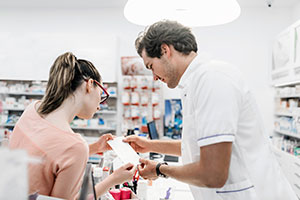When Medication Costs Too Much: Prescription Assistance

A commonly prescribed stimulant medication can cost about $202.39 for a month’s prescription, before insurance coverage. Depending on your insurance plan’s “tiers” of medications, your copay could range from $11 to $110 for that prescription. Many families look at their prescription costs and wonder how they will meet them—or how they can manage ADHD symptoms without purchasing medication.
One man’s dilemma
Tim Kilroy of Massachusetts shared his struggle to have his medication for ADHD covered by his insurance company with National Public Radio (NPR).
“I had tried several drugs,” Mr. Kilroy told NPR. “Finding the right dosage can be really challenging.”
After six years of working with his doctor to find the right medication at the right dose for him, he switched insurance companies and was handed a new pharmacy bill considerably higher than his previous prescription costs. The new healthcare plan wouldn’t cover his medication. He paid it once and went back to his doctor for a medication the new company would cover. While it was helpful for his symptoms and better for his family’s budget, it caused side effects that were problematic.
“I thought, ‘How dare you,’ ” Mr. Kilroy said, remembering the experience. “How dare this company that I pay money to tell me how to manage my healthcare. I was really, really angry.”
In the end, Mr. Kilroy changed health insurance companies again, seeking out a provider who would cover the original medication that had been effective—without side effects—for him. Not many people who have ADHD or other health conditions have the same option, and they continue to struggle to fit prescription costs into their budgets.
Finding ways to pay for medications
If you cannot change your insurance plan, you don’t currently have a healthcare plan, or you have insurance and a high copay, what are your options to pay for ADHD medications?
Most medication manufactures will have patient assistance programs, or PAPs, that provide their medications to patients at lower costs. You can contact the manufacturer directly, or your doctor or pharmacist can help you contact the manufacturer. You will be required to fill out application paperwork and may need to disclose your income to establish financial need. Each company decides which of it medications will be included. Included medications can change over time.
“As one PAP director once told me, many people who can’t afford their medicines now will go on to obtain some type of coverage,” says Richard J. Sagall, MD, the cofounder of NeedyMeds. “Since each pharmaceutical company establishes its own rules and guidelines, all PAPs are different. All have income guidelines, but they vary considerably. Each company selects which drugs are available on their programs and how long a person can receive assistance.”
Other options include coupons or discount cards. These cards can be offered by one company and used at many different pharmacies, or a pharmacy corporation can issue its own card for use at its specific pharmacies. Some discount card programs can reduce a medication’s cost by up to 80 percent. CHADD offers a free discount prescription card—CHADD UNA—as membership benefit that has a savings benefit of up to 75 percent.
Several nonprofit agencies, such as the Partnership for Prescription Assistance, will work with you to check out many different PAPs or discount card programs and other resources to find the one that best meets your need. Often these are free service programs and some include help with clinical or treatment services.
Prescription assistance resources
This is not a comprehensive list but may be able to help you get started:
- NeedyMeds—offers information on healthcare and prescription discount programs, offering direct assistance and facilitating programs.
- Partnership for Prescription Assistance—has information and assistance for more than 475 public and private programs to pay for medications, including about 200 programs offered by biopharmaceutical companies.
- RxAssist— offers a comprehensive database of patient assistance programs and a prescription savings card.
- GoodRX—helps you find the local pharmacy with the lowest cost for your medication. It also has coupons and a discount card.
- Patient Assistance—helps you to find PAPs that meet your needs and to enroll in those plans.
- RxHope—can help you find a PAP and apply online.
Looking for more information?
- I Don’t Have Insurance. How Do I Pay for Treatment?
- 19 Tips for Finding Low-Cost ADHD Treatment (CHADD members and Attention subscribers only. Subscribe now)
- Health Coverage Denied? File an Appeal
- Insurance and Public Benefits
- NAMI: Getting Help Paying for Medications
- HealthCar.gov: How to appeal an insurance company decision
- HealthFinder.gov: Prescription Assistance
Join the discussion: How do you manage medication costs?
